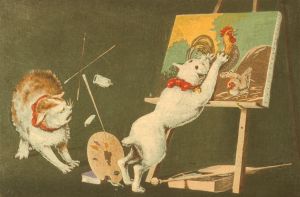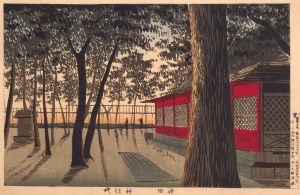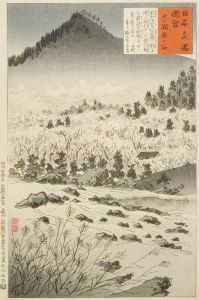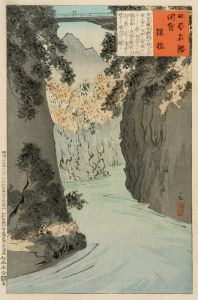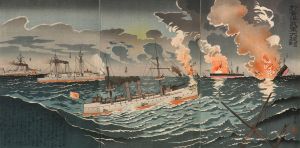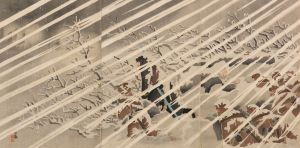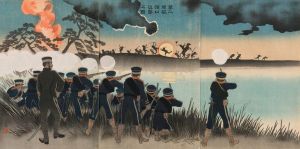
Our Navy Sinking a Chinese Warship in the Yellow Sea
A hand-painted replica of Kobayashi Kiyochika’s masterpiece Our Navy Sinking a Chinese Warship in the Yellow Sea, meticulously crafted by professional artists to capture the true essence of the original. Each piece is created with museum-quality canvas and rare mineral pigments, carefully painted by experienced artists with delicate brushstrokes and rich, layered colors to perfectly recreate the texture of the original artwork. Unlike machine-printed reproductions, this hand-painted version brings the painting to life, infused with the artist’s emotions and skill in every stroke. Whether for personal collection or home decoration, it instantly elevates the artistic atmosphere of any space.
"Our Navy Sinking a Chinese Warship in the Yellow Sea" is a woodblock print created by the Japanese artist Kobayashi Kiyochika. This artwork is a part of the ukiyo-e genre, which flourished in Japan from the 17th to the 19th centuries. Kiyochika, who lived from 1847 to 1915, is known for his works that depict scenes of modernity and conflict, often with a focus on the Meiji Restoration and the subsequent modernization of Japan.
The print in question illustrates a naval battle during the First Sino-Japanese War (1894-1895), a conflict between the Qing Dynasty of China and the Empire of Japan primarily over control of Korea. The war marked a significant shift in regional power, showcasing Japan's emergence as a modernized military force.
In "Our Navy Sinking a Chinese Warship in the Yellow Sea," Kiyochika captures a dramatic moment of naval engagement. The Yellow Sea, located between China and the Korean Peninsula, was a crucial theater of operations during the war. The print likely depicts the Battle of the Yalu River, which took place on September 17, 1894. This battle was one of the largest naval engagements of the war and resulted in a decisive victory for the Japanese navy.
Kiyochika's work is characterized by its dynamic composition and attention to detail. The print shows Japanese warships, rendered with precision, engaging a Chinese vessel. The scene is filled with the chaos of battle: billowing smoke, the flash of gunfire, and the turbulent sea. The Japanese ships are depicted as technologically advanced and well-coordinated, reflecting Japan's naval modernization efforts. In contrast, the Chinese warship is shown in a state of distress, symbolizing the decline of the Qing Dynasty's naval power.
The use of color and light in the print is notable. Kiyochika employs a dramatic contrast between the dark smoke and the bright flashes of explosions, enhancing the sense of urgency and violence. This technique not only serves to dramatize the scene but also to highlight the technological superiority of the Japanese fleet.
Kiyochika's work is significant not only for its artistic qualities but also for its historical context. The First Sino-Japanese War was a pivotal moment in East Asian history, leading to the Treaty of Shimonoseki in 1895, which granted Japan significant territorial gains and marked the beginning of its imperial expansion. The war also exposed the weaknesses of the Qing Dynasty, contributing to internal strife and eventually the 1911 Revolution.
"Our Navy Sinking a Chinese Warship in the Yellow Sea" is an example of how art can serve as both a historical document and a piece of propaganda. It reflects the nationalistic fervor of the time and the pride in Japan's military achievements. Kiyochika's print would have been part of a broader effort to bolster public support for the war and to celebrate Japan's emergence as a modern nation-state.
In summary, Kobayashi Kiyochika's "Our Navy Sinking a Chinese Warship in the Yellow Sea" is a historically significant woodblock print that captures a key moment in the First Sino-Japanese War. Through its detailed depiction of naval warfare and its dramatic use of color and composition, the artwork provides insight into the technological advancements and nationalistic sentiments of Meiji-era Japan.







